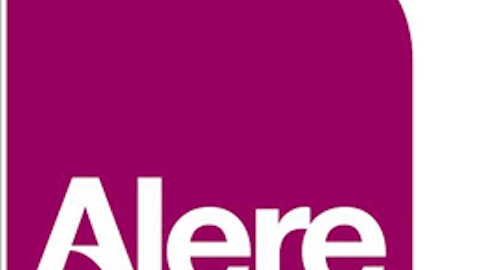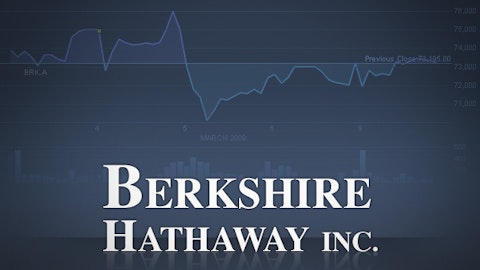It is often said that the real cure for HIV and AIDS will come from better, more discrete testing procedures, and not from the drug cocktails made by Gilead Sciences, GlaxoSmithKline and Merck. Considering that nearly 20% of individuals infected with HIV aren’t even aware that they are carrying the virus, HIV tests should be just as important in battling the virus as condoms or antiviral medications.
HIV tests have come a long way since being introduced in 1985, when a positive test was a death sentence due to the lack of the HIV medications we have today. Due to this public perception of HIV tests, 14% of American consumers are afraid to learn their HIV status, while 48% do not consider themselves to be at risk. That big disconnect between consumer perception and harsh realities is exacerbating the spread of HIV.

Therefore, home HIV test kits, which are now increasingly sold alongside home pregnancy tests, are increasingly gaining acceptance as a viable alternative to visiting the doctor. The first of these over-the-counter test kits, OraQuick, produced by OraSure Technologies, Inc. (NASDAQ:OSUR), was approved by the FDA last year. Will OraQuick disrupt the traditional, lab-based methods of testing for HIV, or are these concerns unjustified?
The psychological factor
In the past, going to the doctor to get an HIV test was often associated with shame and social isolation. Even after the tests were completed, many patients failed to return to the clinics to learn their results. A smaller private company, Home Access Health Corporation, initially addressed this issue with its home test, which required a patient to prick a finger and mail the dried blood sample to the laboratory.
OraSure Technologies, Inc. (NASDAQ:OSUR)’s OraQuick went a step further by offering the first at-home test that didn’t require a blood sample or mailing it to the lab. OraQuick, which checks for antibodies that are fighting against HIV, merely requires an oral swab that generates results within 20 to 40 minutes. Positive test results, however, must be followed up by a laboratory-based test for full confirmation.
However, critics claim that OraQuick opens up the doors to a whole new set of problems. The CDC warned that self-diagnosis could lead to an influx of new patients who would overwhelm health clinics. Other critics believe that unaccompanied self-diagnosis, made without the counseling and support of health care providers, could lead to an increase in suicides. Yet the OraQuick’s benefits certainly outweigh these alleged drawbacks.
Rising demand for home tests
Last quarter, strong demand for OraQuick fueled OraSure Technologies, Inc. (NASDAQ:OSUR)’s 7.6% year-on-year revenue growth to $24.3 million. However, the company remains unprofitable, reporting a net loss of $0.10 per share, wider than the loss of $0.07 per share it reported in the prior-year quarter. The company attributed the net loss to increased advertising and promotional expenses for OraQuick. OraQuick is a young but growing business segment, generating $2.1 million in sales during the second quarter.
OraSure Technologies, Inc. (NASDAQ:OSUR)’s other major business is DNA Genotek, which produces DNA testing kits that use saliva, rather than blood, for home tests that are mailed in for analyses. DNAG’s kits are also widely used by biotech companies for research purposes. Sales of DNAG products rose 39% year-on-year during the second quarter.
Will home testing render older technologies obsolete?
HIV tests have advanced dramatically over the past 28 years. Even though OraQuick is a market-disrupting product, it won’t make much of a lasting impact on overall sales of laboratory-based HIV testing equipment, which are far more complex and accurate than OraQuick’s test.
In 2006, Bayer AG (ADR) (OTCBB:BAYRY) produced the first automated HIV test that could detect all known types of the virus. The test, known as EHIV (Human Immunodeficiency Virus-Enhanced), is an in-vitro diagnostic test that looks for antibodies that are reacting to HIV-1, HIV-2 and a subtype of HIV-1. Since the test is fully automated, it allowed laboratories to process more tests with more accurate results, significantly boosting the capabilities of health care facilities. The product was sold to Ortho Diagnostics, a subsidiary of Johnson & Johnson.
In 2009, Abbott Laboratories (NYSE:ABT) developed a new testing system, Abbott Prism HIV O Plus, a fully automated test to screen blood and organ donations for antibodies reacting to HIV. The system — which can detect HIV-1, HIV-2, and the subsets of HIV-1 — runs up to 160 samples per hour, dramatically increasing the efficiency of laboratory tests and boosting the rate at which patients can receive blood and organ donations. Abbott Laboratories (NYSE:ABT)’s system can also screen for hepatitis B, hepatitis C, and the human T-lymphotropic virus.
A new single-step test to keep an eye on
A smaller company, Alere Inc (NYSE:ALR), recently received FDA approval for its new HIV test, Determine HIV-1/2 Ag/Ab, which is the first approved test that can detect both the HIV-1 antigen and HIV-1/2 antibodies in a single test. What separates Alere Inc (NYSE:ALR)’s test from those made by Bayer AG (ADR) (OTCBB:BAYRY) and Abbott Laboratories (NYSE:ABT) is its ability to immediately detect the HIV-antigen, which allows the virus to be detected earlier, in a single step.
Older HIV tests only search for the associated antibodies, which are an immune response to the antigens that are only detectable after the virus advances. Alere Inc (NYSE:ALR)’s revolutionary new test complements the company’s core business of diagnosis tools, which include home pregnancy tests and fertility monitors. Sales of Alere’s diabetes tests also surged 100% year-on-year last quarter.
In the second quarter, Alere Inc (NYSE:ALR) earned $0.64 per share on revenue of $764 million. Analysts had only expected the company to earn $0.48 per share on revenue of $720.3 million.
A Foolish final thought
These new tests, both at home and in the lab, are encouraging signs that the outlook for HIV, with 50,000 new cases reported annually in the United States, looks a bit brighter than it did several decades ago. Home tests from OraSure Technologies, Inc. (NASDAQ:OSUR) and earlier detection tests from Alere Inc (NYSE:ALR) are increasing the likelihood of identifying more HIV cases before they spread.
Although Alere and OraSure are nowhere as fundamentally sound as HIV treatment biotechs like Gilead Sciences and GlaxoSmithKline, they have a lot of potential upside for investors with a higher tolerance for risk and volatility.
The article A Closer Look at the Market for Home and Lab HIV Tests originally appeared on Fool.com and is written by Leo Sun.
Leo Sun has no position in any stocks mentioned. The Motley Fool has no position in any of the stocks mentioned.
Copyright © 1995 – 2013 The Motley Fool, LLC. All rights reserved. The Motley Fool has a disclosure policy.




